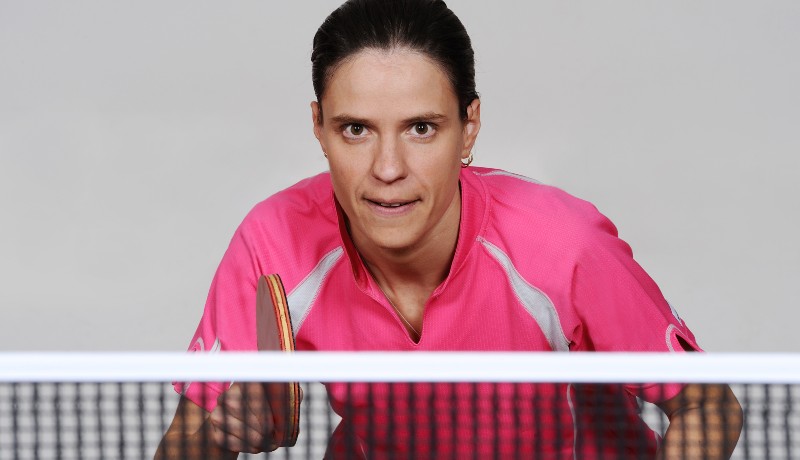
A player I coach often complains about her poor footwork.
“I’m so bad at moving to my forehand.”
“Why can’t I get to balls to my wide backhand?”
“My feet just aren’t fast enough.”
The funny thing is that this player actually moves very well. She is fast. She has good balance. She can cover a lot of the table with her forehand. Her footwork is a lot better than mine!
So why does she think her footwork is so bad?
The answer is less to do with her feet and more to do with her eyes. She has quite a bad habit of watching her own shots and therefore is slow to react to any balls which come back.
It will go something like this…
She serves. I push to her forehand. She plays a very strong forehand topspin, but then stops. She watches his own shot to see if she has won the point. If I can return the ball, she reacts quite late and has very little time to move her feet. She reaches out for the ball, plays a poor shot and then blames her lack of footwork.
But the problem in this scenario is not her feet. It’s her eyes. By watching her own shot and stopping, she is not observing my shot and getting ready for the ball to come back. Therefore she only starts tracking the ball as it crosses the net, which gives her almost no time to prepare to play another strong shot. All she can do is react – stick out her arm and hope to make contact. Her feet stay rooted to the floor.
What should she do instead?
Let’s go back to the scenario. She serves. I push to her forehand. She plays a very strong forehand topspin. As soon as she has played her shot, she should bring her eyes back to my bat. This will allow her to see as early as possible what shot I am going to play and where the ball is going. She then has double the amount of time to prepare for her next shot, move into position and then execute.
If you use your eyes well, it can make a huge difference to your footwork. You have so much more time to actually move your feet.
We all know players who seem to have such good anticipation. They seem to know where you’re going to hit the ball before you do. They’re always in the right position. In all cases, a major factor will be that they are very good at observing their opponent.
They hit.
They observe.
They move.
They hit.
They observe.
They move.
Hit. Observe. Move. Hit. Observe. Move. It’s such an important skill to develop and one which isn’t often talked about.
As an aside – one of the benefits of coaching other players is that I spend hours and hours every week doing this routine – hit, observe, move. My job is literally to observe the player I am coaching to help him / her improve. I can only do this by really watching the shots they play. This skill – observing my opponent – has definitely made my game stronger.
Back to the player I coach. In our sessions, I often have to remind her to stop watching her own shot and instead watch my bat. When she does this, her level instantly jumps up. She sees the ball early. She starts moving her feet. She puts combinations of attacks together. Table tennis becomes easy!
But ball watching can be a tough habit to overcome. We are still at the stage where I have to keep reminding her to watch my bat. Over time, this skill will improve and it will become more natural. Hit, observe, move. Hit, observe, move. But like any other skill in table tennis it needs to be trained. She will need to focus on this a lot over the coming months until she is able to do it without thinking. If she masters this skill, she will be able to exploit her already good footwork, balance and speed. And she’ll become a much stronger player.
